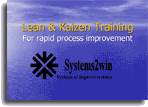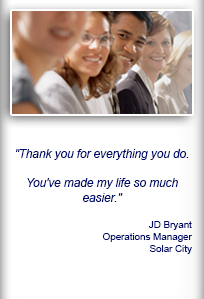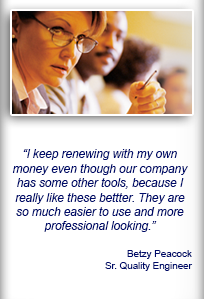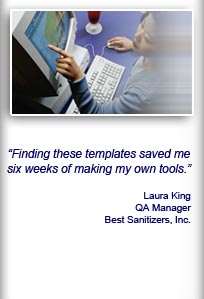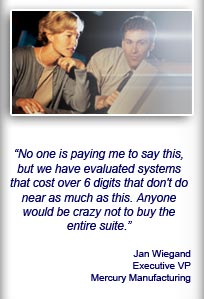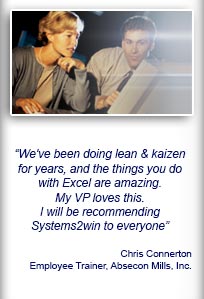Installation and Setup
Installation - Each User. Installation - Multi-user. Language Translations. Personalize Your Templates.Systems2win Training.
Quick Start Initial Training. New User Training. Training Matrix. Systems2win Leadership. Training Classes.Lean Training
Lean Training and Coaching. Lean Principles. Muda 8 Wastes. Goal - Lean Flow. Roadmap - Lean Journey. Value Stream Mapping. Standard Work. Hansei Lean Thinking. Lean Dictionary. Online Lean Training. Lean Leadership.Microsoft Office Training
Excel Training. Excel Drawings (without Visio). Excel Charts. Word Training. PDF Training. Document Storage and Naming.Support
Support.When to use your
PDCA Template / PDSA Template
to systematically apply the PDCA Lean Methodology for problem solving
After glancing over the long list of problem solving tools and methods...
You might be saying...
"All those one-liners make sense when I read them,
but I have a real-world challenge to solve right now... "
Exactly HOW do I apply PDCA — right now?
The best answer is often...
Use your A3 template
and the A3 problem solving method

Another good answer is...
Use your PDCA template (PDCA.xlsx)
- to systematically coach every person in your organization
- to systematically apply lean thinking to improve every process

When to use your PDCA template
Use your PDSA template whenever you encounter unknown territory that is a chasm between you and your next Strategic Challenge.
If you are not navigating unknown territory, then you should use your Tool Selection Matrix to choose appropriate lean tools and methods.

How to use your
PDCA template
Find and open your template
Find and open your PDCA template
(PDCA.xlsx or PDCAc.xlsx)
in the same way that you find and open your other 150+ Systems2win templates.

Save your working document
following the usual document storage and naming conventions established by your leaders
Open a Blank Sheet
When you're ready to start doing your own real work...
click the button to 'Open a Blank Sheet'
Excel Ribbon bar > Systems2win tab > Open a Blank Sheet
This blank sheet is where you will do your real work
(not on the Sample sheet — which gives you sample data that is extremely helpful for learning how to use your new tool, but is the wrong place to do your real work)
Rename your new sheet.

If English is not your preferred language
Switch to your language, just like every Systems2win Excel template.
Before starting your first PDCA Cycle
You and your Coach should do the first 3 steps of the Improvement Kata:
- Strategic Alignment
- Process Analysis
- Next Goal Setting
Now your team is ready to start using your
PDCA template
PDCA Coaching Questions
Between every PDCA experiment, you and your Coach will do a coaching session together.
Prior to that Coaching Session, you will use your PDCA template to prepare your answers, because you know that your Coach will ask the same questions every time.
- What is the Target Condition? *
- What is the Current Condition? *
- What was your Last Step? (Test Plan)
- What did you Predict would happen?
- What were the Actual Results?
- What was Learned?
- What are the Obstacles? *
- What is your Next Step? (Test Plan) **
- What do you Predict will happen?
- When is the soonest that we can go see the Results and Learnings from this next Step?

PDCA template
* These 3 fields might also be duplicated or summarized on your visual Storyboard.
** You will often work on the same obstacle for several PDCA Cycles
These PDCA Coaching questions come from Mike Rother's book, The Toyota Kata
You should also be using the usual Lean Coaching Habits in everything you do
Use your Storyboard
Your working document created from this PDCA Coaching template is intended to be printed and posted on your Storyboard
Storyboard = a big visual management bulletin board that summarizes the the challenge that you are working on, and the progress that you are making.
Benefits of your PDCA template
- Gives you an organized place to write your answers to every one of these recurring coaching questions
- Gives you a permanent record
- Gives your organization a standardized format and system for all PDCA coaching
- Makes it easy for your Coach's Coach to coach your Coach
- Can be printed and slipped into a transparent sleeve on your Team Accountability Board and has all of the standard features common to every Systems2win template
- Standardized format common to all 150+ templates
- Help, training, and technical support
- Language translations
Click a button, and now the same template is in Chinese, German, French, Spanish, or Portuguese
- Easily personalized
in ways that your personalizations will be automatically found & transferred every time you upgrade
- All of the standard systems
for version control, distribution to a large number of scattered users, and all the other stuff that you don't want to pay an internal employee to re-invent

Why re-invent?
Tip: You will get even more value from your PDSA template when you supplement it with the PDCA Coaching Observations template (below).
PDCA Coach Coaching
There is even a template for your Coach's Coach, to help your Coach become a better Coach.
What you will learn by using the PDCA Coaching Observations template: (PDCAc.xlsx)
- Asking the right questions at the right time.
- Allowing the Learner to lead (not follow).
- Better clarification of the PDCA Coaching Kata method.
- More focus on learning the Improvement Kata way of thinking — not just short-term results for the problem of the moment.
- Forcing the Learner to apply Lean Thinking, so that it becomes an ingrained habitual way to approach ANY problem.

And guess what?
The Coach's Coach becomes a better Coach too.
Tips:
Click each row header for pop-up help providing helpful tips and instructions. Study the sample data on the Sample worksheet.
Be unobtrusive
As the Coach's Coach, you should usually observe the process without participating too much.
Give most of your feedback and mentoring after the session, and (before the session begins) give the Coach the option of whether to receive feedback in private, or with the Learner also receiving your feedback.
There are...
2 layers of PDCA cycles
| 1) Strategic (or macro) | 2) Tactical (or micro) |
|---|---|
|
Click for larger image in new window Strategic Planning and Policy Deployment
The PDCA Cycle is foundational |
|
Lean Methodology
for continuous process improvement
At the root of every lean methodology is...
The Scientific Method
- Come up with a hypothesis
a theory of how something works, and how something that you might do might affect it
- Try an experiment; to test your theory.
- Observe, study, analyze, and reflect on the results.
- Do something with your newfound knowledge:
- If your theory seems wrong or incomplete
come up with a new hypothesis,
and a new experiment to test it
- If your theory seems right
apply your new knowledge,and publish your results so others can benefit.
- If your theory seems wrong or incomplete
And then choose your next puzzle to solve
in a virtuous cycle of continuous improvement.

PDCA is the most popular lean methodology
You will also benefit from learning other popular problem solving methods
that each apply the Scientific Method in different ways.
PDCA Cycle / PDSA Cycle
has 2 names because late in W. Edwards Deming's career, he started using the word "study" instead of "check"
Plan / Predict
Identify the next obstacle or knowledge threshold blocking your progress toward the next Target Condition that you and your Coach agreed upon using the Improvement Kata method for goal setting.
Then as part of PDCA Coaching Cycles, you and your Coach design experiments to better understand your process, and predict the outcomes that you anticipate might result from each experiment
It is acceptable to plan a PDCA Cycle where your only goal is to "go see" what is currently happening, but usually you will plan to change one thing.
Do
Try it. Do your experiment as soon as possible.
How can you quickly do your experiment on a small scale?
Could we know the answer by this afternoon?
Rapid PDCA cycles are far more effective than long ones.
Think hold before tape before weld...
Check / Contemplate / Study
Study, Analyze, and Reflect on results
This is by far the most important (yet most likely to be skipped) part of the cycle
Act / Adjust
If results confirm what you expected,
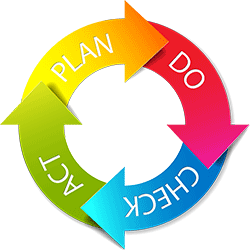
then adjust the standard work to anchor the change, and socialize your success, so that everyone does it the better way.
If results are different from what you expected,
then adjust your thinking to come up with a new experiment to better understand the true nature of your process.
Then start over again...
using PDCA Coaching Cycles to identify your next obstacle and design your next test based on your (now greater) understanding
in a virtuous cycle of continuous improvement
There's no such thing as a failed experiment
"If the result confirms the hypothesis, then you've made a measurement.
If the result is contrary to the hypothesis, then you've made a discovery."
~ Enrico Fermi — Nobel Prize winning physicist
A "failed" experiment is more valuable than a "successful" one

Why? Because a refuted hypothesis reveals a knowledge threshold. It makes the limits of your current understanding visible.
And new discoveries can happen only in that blurry unknown gray area that lies just beyond your current threshold of understanding.
It is only when your experiment yields unexpected results that you are forced to design new experiments that will soon yield valuable new learnings.
We already know it probably won't work
That's the right mind-set to have, to approach a well-designed experiment.
The purpose of the experiment is not to prove somebody right, or somebody wrong.
Our goal is to learn more about "what are the obstacles preventing it from working?"
Because we can't overcome obstacles until we understand them.
Don't think too far ahead
A huge advantage of rapid PDCA Cycles is that you only need to plan your NEXT experiment.
The next experiment after that might change radically based on the results of this one.
It doesn't matter where you start
Every obstacle will be sure to surface as you progress through your experiments.
One strategy is to start by simply attempting to accomplish your next Target Condition using your process as it is — with no changes. You will be sure to be stopped by several obstacles, which you then simply write down in your Obstacles Parking Lot in your PDCA template and/or Storyboard, and then you consult with your Coach to choose the first obstacle to begin working through.
Learn more about the Scientific Method for Problem Solving
The SDCA Cycle
for daily kaizen
Definition of Daily Kaizen
continuous improvements consistently found & implemented by Daily Accountability Teams
(not kaizen events, which are more of a burst of improvement)
For Daily Kaizen...
- There is no planning needed
- Adhering to Standard Work is even more critical
so the cycle emphasizes Standard Work even more becoming abbreviated to:
- Standardize — establish work standards
- Do — apply the standards
- Check / Study — Any deviation from the standard should prompt the following 3 questions:
- Did the deviation occur because no standard exists?
- Did the deviation occur because the standard is inadequate?
- Did the deviation occur because the standard was ignored?
- Act — Adjust either the standard or the behavior of the worker that ignored the standard

And more popular Lean Methodologies
DMAIC Cycle
Define |
The DMAIC Cycle is similar to the PDCA Cycle, and is another way to apply the scientific method that is popular in the Six Sigma community. (with emphasis on quality, more than time and cost) And there are a half dozen acronyms spawned for DMAIC as it is applied to DFSS new product development and other special situations... |
The Shewhart Deming Cycle
Edward Deming (1986)
- What could be the most important accomplishments of this team?
What changes might be desirable?
What data is available? Are new observations needed?
Plan an experiment to change or test something. - Make the change (preferably on a small scale)
- Observe the effects
- Study and reflect upon the results.
What can be learned?
What can be predicted? - Repeat the cycle — accumulating wisdom
The Six Steps of Kaizen
In their book Toyota Kaizen Methods, Isaiah Kato and Art Smalley
popularized the following Six Steps to Improvement:
- Discover improvement potential
- Analyze current methods
- Generate original ideas
- Develop an implementation plan
- Implement the plan
- Evaluate the new method

And more...
See the training page for Problem Solving Tools
to learn about many other frameworks
for applying a systematic approach to problem solving.
You get the idea...
Any approach to process improvement that applies
the scientific method is a lean methodology.
At their core, every tool and method originating from Lean Six Sigma teachings is a unique way of applying the scientific method to unique circumstances that you're likely to encounter on your lean journey.
PDCA requires daily practice
What's the difference between a scientist and a third-grade science student?
They both know the definition of the scientific method...
but a scientist actually practices the scientific method with a high degree of skill to solve endless diverse real-world problems
That's your goal...
to be a skilled and experienced lean six sigma practitioner...
actually practicing the lean six sigma scientific methods — with a high degree of skill — to solve endless diverse real-world problems
"Don't be too timid and squeamish about your actions. All life is an experiment. The more experiments you make the better."
~ Ralph Waldo Emerson
Design of Experiments
aka DOE, D of E, designed experiments
Design of Experiments is a Six Sigma method to design, conduct, and analyze scientific experiments to test assumptions and hypotheses about how different variables affect the outcomes of a process.
Designed experiments are usually conducted in two phases:
Phase 1) Screening Experiment: to identify which of many possible variables have the most significant impact.
Phase 2) Optimization Study: to study the few most impactors variables more attentively.
General Procedure:
- Choose the process to study, and the purpose of the study.
- Clarify the output measures ("response") to study.
- Determine the appropriate measurement precision and accuracy
(perhaps using repeatability and reproducibility studies)
- Using tools such as flowcharts, brainstorming, root cause fishbone... Identify potential variables ("factors") that might affect the output. Variables that can be controlled (and therefore experimented with). Identify each factor with a letter/label, such as A, B, C, etc.
- Choose low and high settings ("levels") for each factor, and identify them as A+, A-, B+, B-, C+, C-, etc.
- Document the design of experiments, including:
- The different combinations of levels ("treatments")
- How many times each treatment will be performed ("replication")
- Sequence ("randomization")
- Identify variables that might interfere with the experiment and plans for how to minimize or at least monitor them.
- Perform the experiment — carefully — as designed.
- Analyze the data and document conclusions perhaps using Pareto and other types of charts for clearer understanding.
- Use the conclusions to improve the process, and verify that the changes are actually improvements.
- Standardize the improved process.
- Decide whether or what additional experiments should be done next. Do it again.
Like everything else in the realm of Six Sigma... there is more to it than this brief summary.
For a more complete understanding, refer to the suggested reading: An Introduction to Design of Experiments, by Larry Barrentine.
If Six Sigma Design of Experiments sounds too complicated for you,
then it is
Unless your problem justifies the (much) greater complexity of Six Sigma, you should be using the (much simpler) PDCA lean methodology.

Suggested Reading and Resources for
PDCA Lean Methodology
- Toyota Kata, by Mike Rother
- The Kaizen Event Planner, by Karen Martin and Mike Osterling
- The Kaizen Event Fieldbook, by Mark Hamel
Return to the Problem Solving home page
Contents
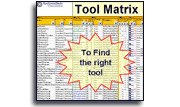
Similar, familiar tools for
Continuous Improvement

Why are we paying our people to re-invent tools, training, and systems that can be owned so easily?
Training and Coaching
Consider Training and Coaching to support your teams to succeed
Schedule a Conference
Schedule a conference
to discuss your challenges
with an experienced lean advisor
Download Trial Now
Get a dozen trial templates,
and another dozen free gifts
@@@ Better conversion rate
if call to action is for a specific tool, and shows the image

Try It
Try this template
along with a couple dozen more
process improvement tools
Calls to Action Botttom
Related Topics
Related Topics section WITHOUT TESTIMONIALS
Replace this paragraph with menu library item for topics related to this video
Training and Coaching
Consider Training and Coaching to support your teams to succeed

Training to get you started.
Tools you won't outgrow.
Schedule a Conference
Schedule a conference
to discuss your challenges
with an experienced lean advisor




